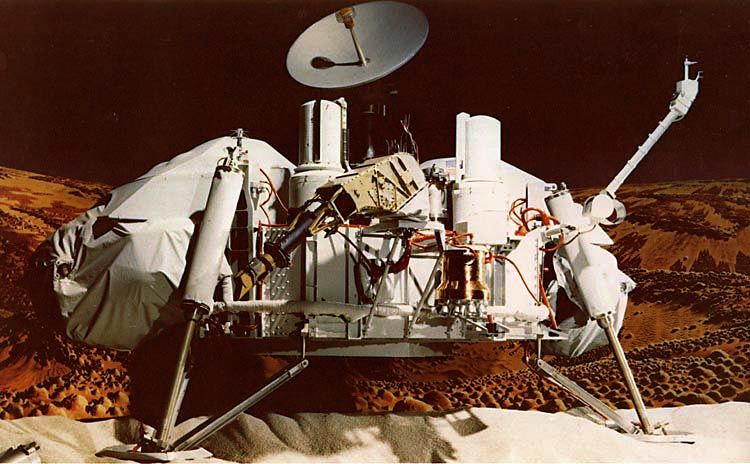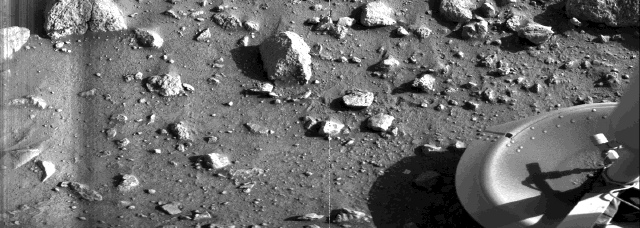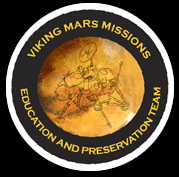
NASA's Viking Mars Missions Star in Virtual Exhibition Online

The seminal Viking orbiter and lander Mars missions of the 1970s were a landmark enterprise, giving the U.S. a big plus in the Red Planet exploration column. That epic NASA saga of exploration took place 40 years ago this year.
Now, for the first time, over 300 artifacts from the Viking Mars Missions Education & Preservation Project (VMMEPP) are available to people around the world.
The artifact availability comes via a partnership between VMMEPP and the Google Cultural Institute. The Google Cultural Institute and its partners are putting the world's cultural treasures at the fingertips of Internet users and are building tools that allow the cultural sector to share more of its diverse heritage online. [Video: Where Did Viking 1 and 2 Land on Mars?]
Virtual exhibition
This new virtual exhibition enables users to see a complete set of the Viking Mission Bulletins that guided the public and press through mission preparation, launch and discoveries; a previously unpublished detailed specification for the Viking Meteorology Instrument; a unique White House document required for mission launch; and a 1967 Martin Marietta (now Lockheed Martin) Viking Sterilization Reference Booklet, representing early standards and procedures that would later become the industry standard that continues today.

The Viking preservation work is being spearheaded by Rachel Tillman, Executive Director and Founder of VMMEPP.
"For our organization, this launch is significant, as it supports both of our key objectives with one singular event – to preserve the history of Viking and to inspire and educate future generations," Tillman said in a press statement.
"Our resources are already being utilized by students from elementary through graduate school, aerospace professionals, and writers who will continue the cultural influence that Viking began," Tillman added.
Get the Space.com Newsletter
Breaking space news, the latest updates on rocket launches, skywatching events and more!

All in the Viking family

Tillman said that "it is personally important to us to honor the men and women of Viking, many of whom were never recognized for their roles. Viking brought conflicting interests and individuals together into a cohesive team and 'family' that changed the face and direction of space exploration."
For more information on the Viking Mars Missions Education & Preservation Project (VMMEPP), go to:
http://www.thevikingpreservationproject.org
The initial Viking Mars Mission Education and Preservation Project Collection can be viewed at:
https://www.google.com/culturalinstitute/exhibit/the-viking-mars-mission/RQKiJsUJbOktIw
Leonard David has been reporting on the space industry for more than five decades. He is former director of research for the National Commission on Space and is co-author of Buzz Aldrin's 2013 book "Mission to Mars – My Vision for Space Exploration" published by National Geographic with a new updated paperback version released in May 2015. Follow us @Spacedotcom, Facebook or Google+. Story published on Space.com.
Join our Space Forums to keep talking space on the latest missions, night sky and more! And if you have a news tip, correction or comment, let us know at: community@space.com.

Leonard David is an award-winning space journalist who has been reporting on space activities for more than 50 years. Currently writing as Space.com's Space Insider Columnist among his other projects, Leonard has authored numerous books on space exploration, Mars missions and more, with his latest being "Moon Rush: The New Space Race" published in 2019 by National Geographic. He also wrote "Mars: Our Future on the Red Planet" released in 2016 by National Geographic. Leonard has served as a correspondent for SpaceNews, Scientific American and Aerospace America for the AIAA. He has received many awards, including the first Ordway Award for Sustained Excellence in Spaceflight History in 2015 at the AAS Wernher von Braun Memorial Symposium. You can find out Leonard's latest project at his website and on Twitter.










